The Kallichoron well
The Kallichoron well is one of the oldest landmarks of Eleusis. According to the Homeric Hymn to Demeter, after wandering for ten days searching for Persephone, the goddess arrived in Eleusis disguised as an older woman and sat under a small olive tree by the Parthenion well, where citizens got water. The daughters of King Celeus met her and invited her to follow them to the palace, where she would find hospitality. When her identity was revealed, the goddess ordered the rulers of the city and the people to build her a large temple. Demeter mentioned the Kallichoron well and the hill above it to determine the desired location.
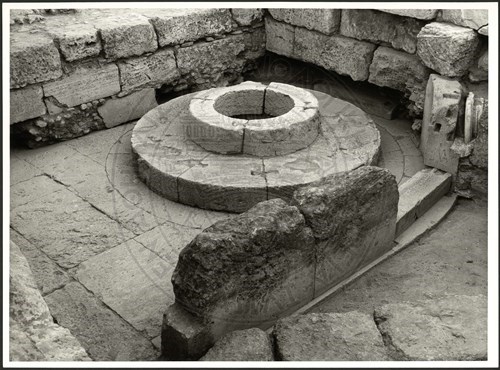
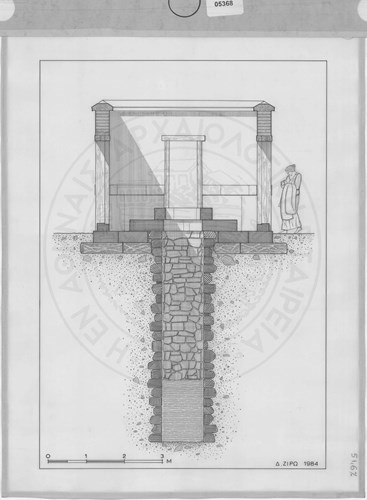
The well is located next to the Greater Propylaea and dates to the second half of the sixth century BCE. Over the years, despite the constant changes in the sanctuary's layout with the reconstruction of the fortification and the Propylaea, the architects always respected the Kallichoron and adapted their buildings to its presence. The well, therefore, remained visible throughout the life of the Mysteries and was the first sacred landmark seen by the initiates arriving from Athens on the 19th of Boedromion.
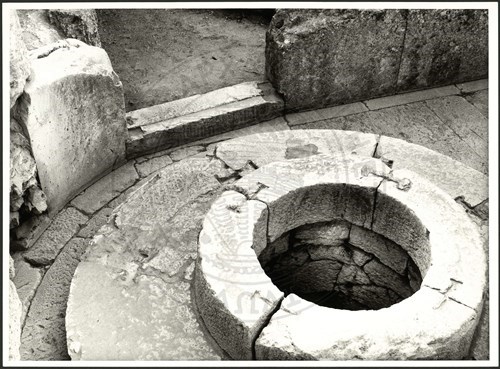
The well’s inner walls are lined with Eleusinian limestone with a polygonal building system. The mouth consists of two concentric circles with carefully carved stones. The lower ring consists of eight stones joined by double T-joints, while the upper ring consists of four stones. The opening of the mouth is 0.88 metres (2.9 feet), and its current depth is close to six metres. In the fourth century, the parapet made of alabaster slabs and two doors were added; one is now under the courtyard slabs while the other is preserved in place. When the Greater Propylaea were erected during the reign of Marcus Aurelius, the builders took care to “cut” the lower step of the staircase to preserve the sanctity of the Kallichoron well. At that time, they probably placed a wooden door on this side of the parapet, as well as a wooden ladder that gave access to the well, which was now about 1.35 metres (4.4 feet) below the floor of the courtyard.
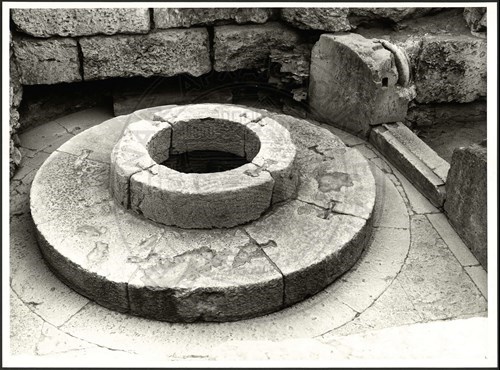
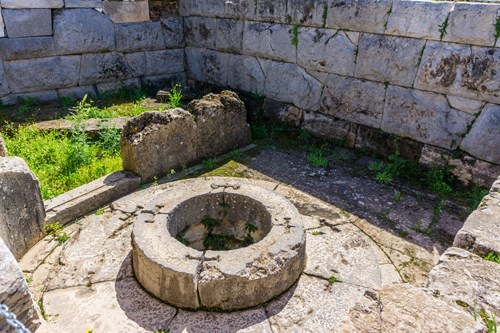
Researched and written by
MENTOR
Bibliography
Cosmopoulos, Michael. Bronze Age Eleusis and the Origins of the Eleusinian Mysteries, Cambridge: Cambridge University Press, 2015.
Kourouniotis, Konstantinos. Eleusis: a guide to the excavations and the museum, Athens: The Archaeological Society at Athens, 1936.
Longfellow, Brenda. “Roman Fountains in Greek Sanctuaries”, American Journal of Archaeology, 116, 1 (2012), pp. 133-155.
Mylonas, George. Eleusis and the Eleusinian Mysteries, London: Routledge, 1962.
Papangeli, Kalliopi.Eleusis: the archeological site and the museum, Athens: Omilos Latsi, 2002.
Images
1st (and last) image: The Kallichoron well in Eleusis, today / Haris Andronos
2nd image: The Kallichoron well in Eleusis / The Archaeological Society at Athens
3rd image: Plan of the Kallichoron well / The Archaeological Society at Athens
4th image: The Kallichoron well: detail / The Archaeological Society at Athens
5th image: The Kallichoron well: the entrance / The Archaeological Society at Athens


